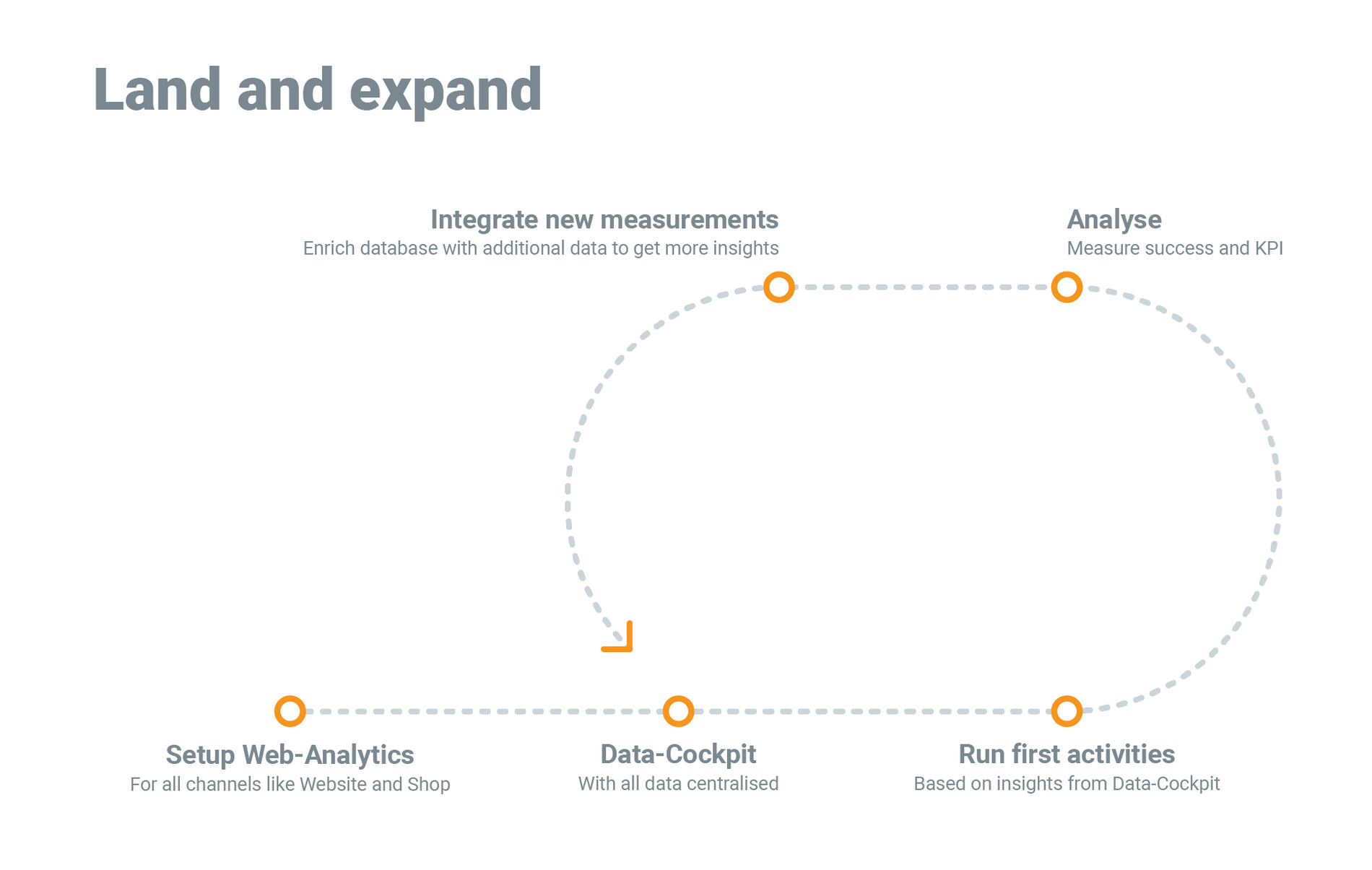Get in touch
Thanks to the current technological possibilities, companies today have more possibilities than ever before to address their customers in a targeted manner at a wide variety of touch points. However, before they can do so, they face a number of challenges: How can the incredible complexity of data from website analytics, store analytics and CRM databases be mastered and channelled into marketing activities? In this article, we will explain how to approach data-driven commerce.
The marketer's tool has always been a solid foundation of data. Before marketing and commerce went digital, this data came primarily from the company's own customer database and from random samples of market research. The channels through which customers could be reached were also clear – and could be counted on one hand.
Today, the digital world offers us much more potential for analysis: not only does the information from the database itself provide the marketer with insights into what customers want, but their behavior in the Internet can now also be recorded. In addition, the channels through which companies and customers interact with each other have become more diverse – and so have the touchpoints.
In order to exploit the potential that arises from these developments and to be able to address individual customers at all of these touch points with the company, i.e. to accompany them throughout the entire customer journey, the appropriate technologies are required in addition to the relevant data.
Let's look at a concrete example:
From this example it becomes clear: This procedure requires an enormous amount of manual effort and, in addition to a time delay, also brings with it a certain susceptibility to errors caused by import and export processes. However, this can be solved with the appropriate technologies.
Take, for example, the Adobe Experience Cloud, a collection of specialized and integrated solutions for digital marketing. The cloud in itself is already a powerful tool for automated and personalized marketing – and therefore an excellent basis for data-driven business. However, it has its limits. Therefore, in order to fully enable the potential of the tools and the existing data for online marketing, it requires a corresponding E-Commerce equivalent: Our digital platform solutions, for example for airlines or airports, provide numerous E-Commerce functions – and the appropriate interfaces. This makes possible what previously seemed impossible: standard for success, customize to perfection.
The two technologies complement each other perfectly: both are open systems that enable the enrichment and exchange – and thus the optimal use – of data and focus on the individual customer. Across the entire customer journey. So, while the Adobe Experience Cloud offers specialized solutions for digital, fragmented, context-sensitive real-time marketing, the Omnichannel Platform bundles key E-Commerce functions, product recommendations, logistics and fulfillment as well as payment and dynamic pricing.
The combination has already proven itself in practice: There are examples where personalization with the Adobe Experience Cloud has more than doubled e-mail opening rates and increased retail sales per customer by 60 percent. The figures clearly show how much potential can lie in data – and often remains untapped.
The integration of such a complete solution sounds very complex and like an investment of time and money that many companies cannot or do not want to make so quickly. Fortunately, they do not have to! Because it usually it makes much more sense to start with the existing setup and then to gradually proceed than to immediately implement such a setting completely. This means:

This approach may quickly lead to visible successes, but it is much more than a quick fix for quick wins. On the contrary: Measures implemented according to this principle form the foundation for later developments and allow for a step-by-step flexible adaptation to new needs and requirements. This makes the “Land and Expand” approach ideally suited for tackling data-driven commerce. Gradually, sustainably – and, above all, successfully.